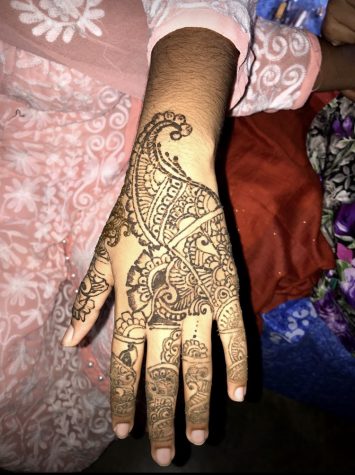Cultural Appropriation vs. Cultural Appreciation
The terms “cultural appropriation” and “cultural appreciation” have been used interchangeably during modern times. Cultural appreciation is the act of wanting to learn more about other cultures in an effort to widen someone’s perspective and improve cross-cultural understanding, while cultural appropriation takes aspects of traditions, customs, and ideas from another culture and inappropriately uses it for personal gain. Although it is important to seek information about stories, customs, and ideas from other cultures, it is also essential to understand the context behind them.
Society has taken more notice of cultural appropriation in the late 20th century along with the rise of globalism, multiculturalism, and the Black Lives Matter movement. Starting with the music industry, from the 1930s-1970s, rock-n-roll artists adopted blues into their own music. Blues is a music genre that was created by African-Americans based on spirituals, songs, and traditions. Artists were able to profit from music taken from African Americans in a segregated society. Black artists gained attention from this, but it is evident that white producers and artists disproportionately benefited from this. Cultural appropriation still happens in the music industry. To illustrate this, in Katy Perry’s music video “This is How We Do” she wore cornrows, a style of hair braiding, in her hair. According to the Washington Post, she apologized and said that she would educate herself. Another example is in K-pop group BLACKPINK’s hit music video, “How You Like That,” there was a Ganesha statue. Ganesha is worshipped as a Hindu deity in India, and having a statue of this god in a music video can be interpreted as disrespectful. Fans were disappointed in the use of the Hindu god in the video, and the statue was removed.
Knowing the difference between cultural appropriation and cultural appreciation is important in everyday life, especially in everyday fashion. People might think that wearing Henna to a summer festival is trendy because it looks like a fashion statement, but to some, it may not be so. Henna, also known as mehndi, is a paste from leaves that is adorned on hands and bodies in Hindu and Muslim weddings and celebrations. Appropriating Henna for a rock concert or a western festival may not be well-received by some. On the other hand, if someone wears henna to their Indian friend’s wedding, it is a polite gesture and shows appreciation for their culture.
Another instance of cultural appropriation can be found in sports. The American football team Kansas City Chiefs has a chant that fans use when they score a touchdown or win a game, it is known as a “tomahawk chop.” Fans might not intend any harm, but Native Americans can be hurt from this portrayal of them, and some do find it offensive. Due to the awareness about cultural appropriation, the baseball team Atlanta Braves removed a “Chop On” sign that was placed by the entrance of Truist Park and is considering abolishing the tomahawk chop chant. As a result, people are becoming more aware of the differences between cultural appropriation and appreciation. This change in mindset is already reflected by plans to rename inappropriate names given many years ago to various sports teams.
There are many ways that people can take part in a cultural appreciation without offensively appropriating a culture. It is important to listen to stories and understand the context of traditions from other cultures. A positive thing to do is to share each other’s cultures, then people can partake in a mutual understanding of one another’s food, customs, traditions, and practices.

Your donation will support the student journalists of Parkland High School. Your contribution will allow us to purchase equipment and cover our annual website hosting and printing costs.

Shaiyan is a senior, and this is her second year in the Trumpet. She enjoys writing news, opinion, and health articles. She's in Girl Scouts and various...







